Bone Fractures: Types, Causes, and Recovery Tips
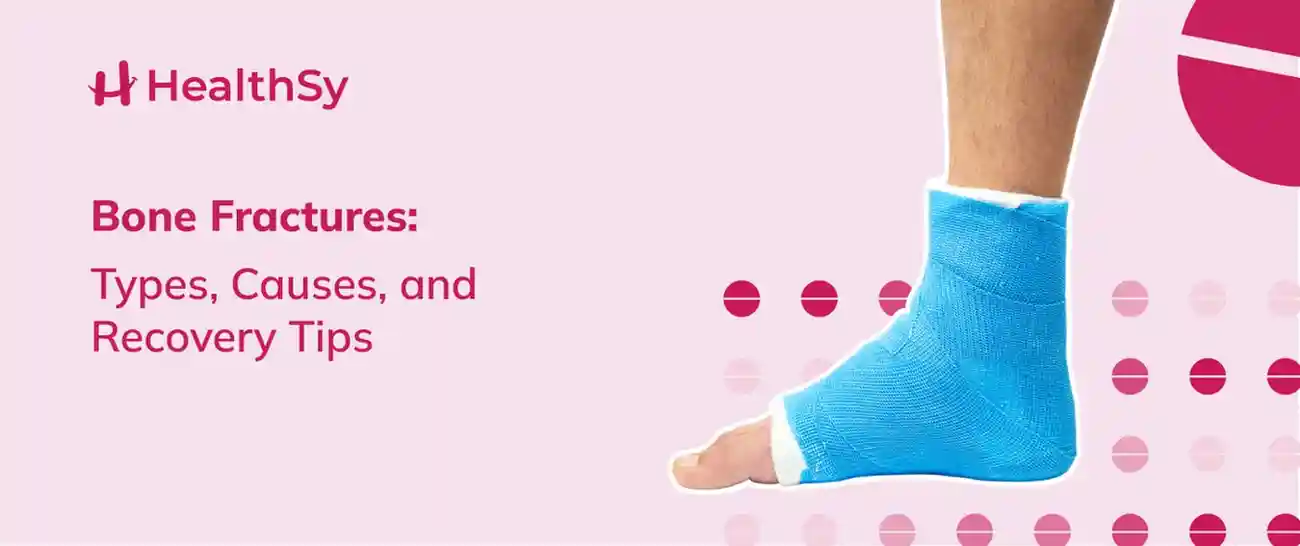
An unexpected accident or a wide spectrum of injuries can often cause bone fractures. A bone fracture refers to a cracked or broken bone and is a common medical condition that can happen to anyone. Understanding the types, causes, and treatment options is crucial for effective healing. Therefore, in this blog, we will explore everything you need to know about bone fractures to help you or your loved ones recover better and faster.
Types of Bone Fractures
Bone fractures can be classified into several types based on their severity, location. The following are some common types of bone fractures:
1. Simple Fracture: A simple fracture does not penetrate the skin, and this fracture is also known as a closed fracture. It is usually less severe and has a quicker healing time compared to other types of fractures.
2. Compound Fracture: It is also known as an open fracture where the broken bone pierces the skin, creating an open wound, exposing the bone. This type of fracture has an increased risk of infection and needs immediate attention.
3. Displaced Fracture: A displaced fracture occurs when the broken ends of the bone are not aligned properly. This type of fracture often requires medical intervention, such as manipulation (setting the bone back into place) or surgery, to restore proper alignment.
4. Non-Displaced Fracture: A non-displaced fracture is when the broken ends of the bone remain in alignment. This type of fracture may be treated with immobilization, such as a cast or splint, to allow for proper healing without the need for surgical intervention.
5. Greenstick Fracture: A greenstick fracture is a type of incomplete fracture where the bone bends and cracks but does not completely break. This type of fracture is more common in children due to their softer bones. Treatment may involve immobilization and monitoring for proper healing.
6. Comminuted Fracture: A comminuted fracture is when the bone breaks into multiple pieces. This type of fracture may require surgical intervention to realign the bone fragments and stabilize the injury for proper healing.
7. Stress Fractures: Stress fractures are small cracks in the bone caused by repetitive force or overuse. These fractures often occur in weight-bearing bones and may require rest and gradual return to activity for healing.
Causes of Bone Fractures
Bone fractures happen for many reasons. Here are some common causes of bone fractures:
1. Trauma
The most common cause is trauma, such as falls, car accidents, or sports injuries. Trauma can lead to a variety of fractures, ranging from simple to comminuted, depending on the force and impact of the injury.
2. Osteoporosis
It is a bone-thinning condition that looks like honeycomb, making bones brittle and more vulnerable to fractures, especially in the hip, spine, and wrist.
3. Overuse
Repetitive motion or strain, especially in sports, can lead to stress fractures due to accumulated microtrauma.
4. Medical Conditions
Diseases like cancer, bone cysts, or infections can weaken the bones and lead to pathological fractures.
5. Age-related Degeneration
It refers to the natural wear and tear that occurs in the body as we age, particularly in joints and tissues. Regular exercise, a healthy diet, and proper medical care can help slow down the progression of age-related degeneration and support overall health and mobility.
Symptoms of Bone Fractures
Generally, the bone fracture symptoms vary depending on the location and severity. This includes:
· Pain
· Swelling
· Deformity
· Difficulty or inability to move
· Tenderness
· Numbness or Tingling
· Bone popping
· Visible Bone Protrusion
How Are Bone Fractures Diagnosed?
When diagnosing a bone fracture, healthcare providers typically use imaging tests such as:
· X-rays
· CT scan (Computed Tomography)
· MRI (Magnetic Resonance Imaging)
· Bone scan
· Ultrasound
In some cases, the healthcare provider may consider conducting a physical examination to assess the area of concern for tenderness, swelling, or deformity.
Recovery Tips
· Eat foods rich in calcium and vitamin D like dairy, leafy greens, and eggs.
· Avoid smoking and alcohol as they can slow down healing.
· Keep the fractured area stable using casts or splints as recommended.
· Get plenty of rest to support the body’s natural healing process.
· Start gentle movements or exercises only when approved by your doctor.
· Stay hydrated to aid circulation and overall recovery.
· Use ice packs to reduce swelling and relieve pain.
· Follow your doctor’s advice and take supplements like calcium or vitamin D if prescribed.
Final Thoughts
Bone fractures may be common, but with the right knowledge, care, and lifestyle choices, they can often be prevented or fully recovered from. If you have experienced a fracture, do not rush your recovery; healing takes time and patience. With proper care, most people regain full function and can return to their daily lives stronger and more resilient.
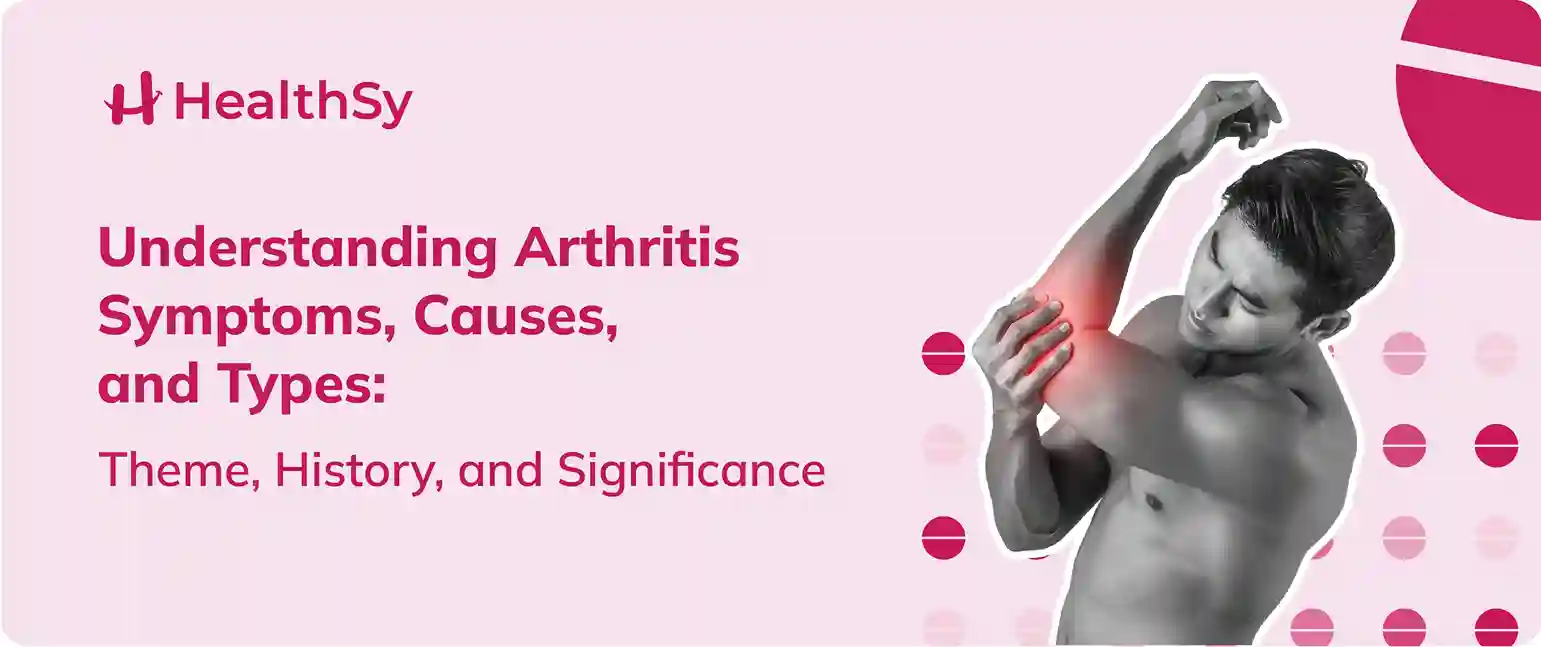
Arthritis is a tenderness and swelling of bone joints that comes with the symptoms of stiffness and joint pains that worsen with age. This illness causes significant damage to your bone joints gradually and weakens them. Keep reading to know more about arthritic symptoms, causes, types, etc. Let's get this started!
What is Arthritis?
Arthritis refers to more than one hundred rheumatic illnesses and conditions that weaken bone joints. These conditions create swelling, stiffness, aching, and pain around almost every bone joint. "Arthritis" means joint inflammation, affecting ligaments and tendons around the joint.
Arthritis Symptoms
The arthritis symptoms vary based on the type, age, and body condition. The following are a few common arthritis symptoms for you to know:
- Pain: Arthritis causes constant pain in your bone joints, or it may be gone for some time and pain again.
- Swelling: the skin covering the affected joint may be red and swollen in some types of arthritis. Swelling is one of the prevalent arthritis symptoms involving many people, and the redness can be less evident in people with dark skin tones.
- Stiffness: Stiffness is a very typical symptom that most likely happens when you wake in the morning or after sitting on a chain or in the car for a bit longer. In the case of a few types of arthritis, stiffness would also occur after an exercise session.
- Difficulty in moving joints: It is a fundamental arthritis symptom when you cannot move your joints or get up from your chair without pain.
These are a few common arthritis symptoms, and based on the type of arthritis, there are a few more, such as joint deformity, warmth, and tenderness.
What Causes Arthritis?
The significant causes of arthritis are unknown. The researchers are working to know if genetics and lifestyle play a role in the development of arthritis. However, there are a few things that can increase the risk of having arthritis:
- Age: Over time, the joints can become damaged, which makes age a significant factor in arthritis.
- Sex: Arthritis, most of the types seem more common in women, except for gout.
- Genes: A few types of arthritis run in the family genes. Types like rheumatoid arthritis, ankylosing spondylitis, and lupus are connected to specific genes.
- Injuries: At times, injuries could also cause a few joint damage.
- Overweight: Weight-bearing joints get extra pressure and increase the chances of arthritis.
- Work: Sitting in your workspace for too long or heavy lifting could stress the joints, gradually leading to arthritis, specifically osteoarthritis.
Arthritis Types
There are over one hundred kinds of arthritis. Here are some of the most popular types:
- Wear and tear arthritis is called osteoarthritis.
- Rheumatoid arthritis is a type of arthritis that occurs when the immune system affects your joints by accident.
- People with gout get sharp uric acid crystals in their joints because of arthritis.
- Arthritis that damages joints near your lower back is called ankylosing spondylitis.
- Psoriatic arthritis is a type of arthritis that people with psoriasis have.
- Junior arthritis is arthritis in children and teenagers younger than 16 years old.
Depending on the kind of arthritis you have, it can either degrade (wear away) the natural tissue in your joint or make it swell up. Some types of arthritis cause swelling, which causes the cells to break down.
Whom to consult for Arthritis?
If you have joint pain or other signs that make you nervous, you should first talk to your primary care doctor. They may refer you to a Rheumatologist or an Orthopaedic doctor specialized in treating and diagnosing arthritis and other diseases affecting joints, muscles, and bones.
Conclusion
Diagnosing the illness as soon as possible and getting it treated will help manage arthritis efficiently. Choosing the proper treatment will help prevent any tissue damage caused by arthritis. Always stay connected to your doctor, and make sure to keep your lifestyle comfortable.
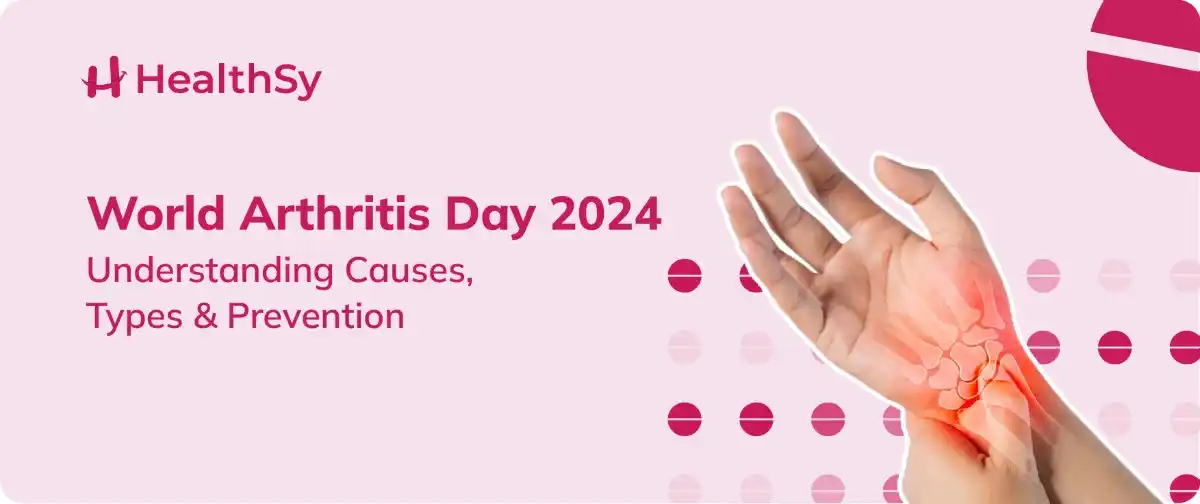
World arthritis day, observed on October 12 every year, is an excellent global initiative focused on building more awareness about early diagnosis and efficient management. In 2024, as we continue to expose the growing concerns about arthritis, it is important to shed more light on the advanced innovations and findings regarding its types, causes, and preventive measures as well. In the current scenario, arthritis affects millions of people globally, and while there is zero clue, early diagnosis could make a great difference in managing the symptoms and quality of life.
What is Arthritis?
Arthritis is not just a single disease, but a term used to describe a few types of joint-related conditions which cause disabilities. This affects people form all age group, butt he risk grows gradually with our age. The early symptoms could range from a very mild discomfort to severe pain.
Causes of Arthritis
The causes of arthritis change depending on the types. But the following are a few most common causes of arthritis:
- Genetic Factors
- Lifestyle & Obesity
- Environmental Triggers
- Diet and Inflammation
- Aging
Types of Arthritis
Osteoarthritis (OA): The most prevalent form, OA results from the wear and tear of joint cartilage, primarily affecting older adults but also those with joint injuries or obesity.
Rheumatoid Arthritis (RA): An autoimmune disorder where the immune system attacks healthy joint tissue, causing inflammation, pain, and swelling. RA often affects multiple joints symmetrically (both sides of the body).
Psoriatic Arthritis: Associated with psoriasis, this type of arthritis causes joint pain, swelling, and stiffness, often in people with the skin condition.
Gout: A form of inflammatory arthritis characterized by sudden and severe pain, often in the big toe, due to the accumulation of uric acid crystals in the joints.
Juvenile Arthritis: This refers to arthritis that affects children and adolescents, causing pain, swelling, and inflammation in the joints.
Prevention and Management
Even though there is a lot of ways to cure arthritis, the importance has shifted towards prevention and management. Here are a few ways to prevent and manage arthritis efficiently:
- Maintain a Healthy Weight
- Stay Active
- Eat a Balanced Diet
- Protect Your Joints
- Early Diagnosis and Treatment
- Stay Informed About New Therapies
The Future of Arthritis Management
With the rising prevalence of arthritis, particularly osteoarthritis due to aging populations and lifestyle factors, research and treatment options are expanding. In 2024, regenerative medicine and cartilage repair therapies are at the forefront of medical advancements. These cutting-edge treatments, though still in development, offer hope for better management of arthritis and even potential prevention strategies.
Conclusion
World Arthritis Day 2024 provides an opportunity to raise awareness about this debilitating condition and educate people about the importance of early intervention. By understanding the causes, types, and preventive measures, we can empower individuals to take control of their joint health and lead a more active, pain-free life. Stay informed, stay proactive, and spread the word this World Arthritis Day!
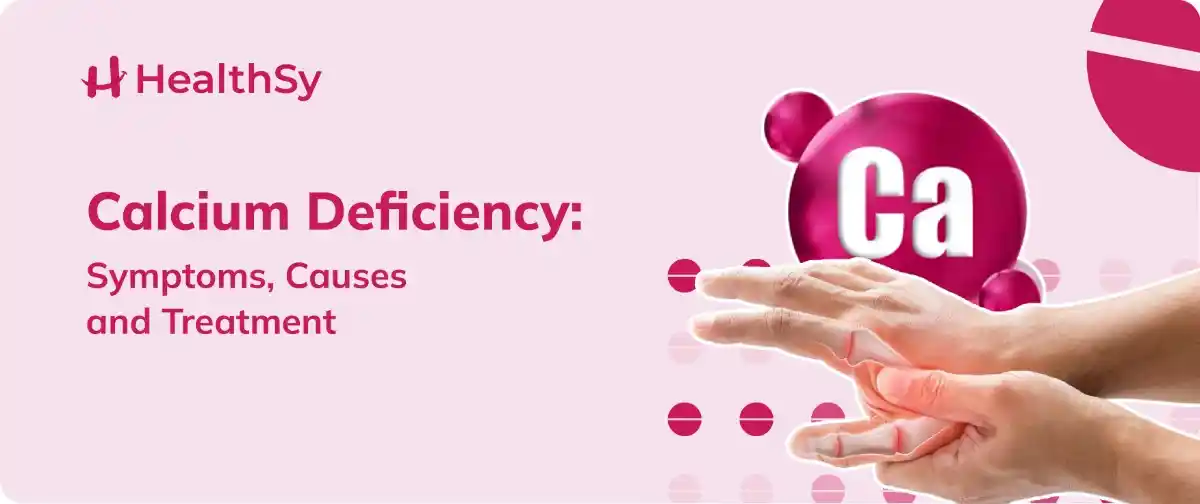
Calcium is a crucial mineral that plays a vital role in maintaining strong bones, regulating muscle function, and supporting various bodily processes. When your body doesn't get enough calcium, it can lead to a condition known as calcium deficiency or hypocalcemia. In this blog post, we'll explore calcium symptoms, calcium deficiency causes, and calcium deficiency treatment options.
Calcium Deficiency Symptoms
Recognizing the signs of calcium deficiency is essential for early intervention. Some common calcium deficiency symptoms include:
- Muscle cramps and spasms
- Numbness and tingling in the fingers, toes, and around the mouth
- Fatigue and weakness
- Dry, rough skin
- Brittle nails
- Tooth decay
- Osteoporosis (in severe cases)
- Irregular heartbeat
- Depression and mood changes
- Difficulty concentrating
It's important to note that these calcium deficiency symptoms can be subtle at first and may worsen over time if left untreated.
Calcium Deficiency Causes
Understanding the root causes of calcium deficiency can help prevent its occurrence. Some common calcium deficiency causes include:
- Inadequate dietary intake: Not consuming enough calcium-rich foods like dairy products, leafy greens, and fortified foods.
- Poor calcium absorption: Certain medical conditions, such as celiac disease or inflammatory bowel disease, can interfere with calcium absorption.
- Vitamin D deficiency: Vitamin D is essential for calcium absorption, and a lack of it can lead to calcium deficiency.
- Hormonal imbalances: Conditions affecting the parathyroid gland can disrupt calcium regulation in the body.
- Certain medications: Some drugs, like corticosteroids and proton pump inhibitors, can affect calcium absorption or increase calcium excretion.
- Excessive sodium intake: High sodium consumption can increase calcium excretion through urine.
- Phosphate imbalance: Too much phosphate in the diet can interfere with calcium absorption.
- Pregnancy and lactation: Increased calcium demands during these periods can lead to deficiency if not properly managed.
Calcium Deficiency Treatment
Addressing calcium deficiency involves a combination of dietary changes, supplementation, and lifestyle modifications. Here are some effective calcium deficiency treatment options:
1. Dietary changes:
- Increase consumption of calcium-rich foods like dairy products, leafy greens, and fortified foods.
- Include vitamin D-rich foods to improve calcium absorption.
2. Calcium supplements:
- Consult with a healthcare provider to determine the appropriate dosage and type of calcium supplement.
- Common forms include calcium carbonate and calcium citrate.
3. Vitamin D supplementation:
- Ensure adequate vitamin D intake through supplements or increased sun exposure.
4. Address underlying medical conditions:
- Treat any hormonal imbalances or digestive disorders that may be contributing to calcium deficiency.
5. Medication adjustments:
- Work with your doctor to adjust medications that may be affecting calcium levels.
6. Lifestyle modifications:
- Reduce sodium intake to minimize calcium loss through urine.
- Engage in weight-bearing exercises to promote bone health.
7. Regular monitoring:
- Schedule follow-up appointments to track calcium levels and adjust treatment as needed.
8. Hormone replacement therapy:
- In cases of severe deficiency due to hormonal imbalances, hormone replacement may be necessary.
Remember, it is essential to consult with a healthcare professional before starting any new calcium deficiency treatment regimen. They can provide personalized advice based on your specific needs and medical history.
By understanding calcium deficiency symptoms, identifying potential calcium deficiency causes, and implementing appropriate calcium deficiency treatment strategies, you can maintain optimal calcium levels and support your overall health and well-being.
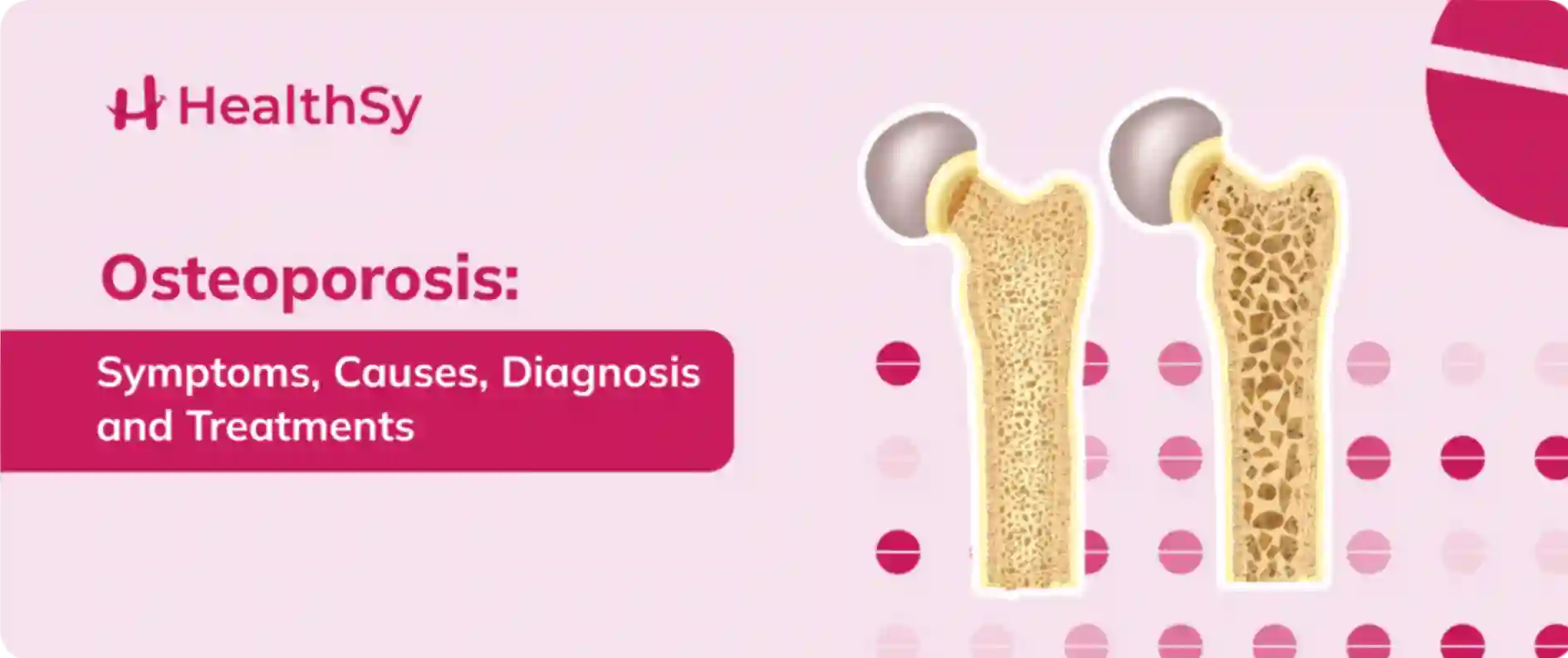
Osteoporosis, also known as the "silent disease," is a condition in which bones are weakened, rendering them fragile and prone to fractures. This disorder affects millions of people worldwide, primarily older adults, and can substantially impact their overall well-being and quality of life. Understanding the symptoms, causes, diagnosis, and treatment options for osteoporosis is critical for successful management and prevention of problems.
What is Osteoporosis?
Osteoporosis is a condition that causes bone weakness. Your bones will become less thick and slender than they normally would be. People with osteoporosis are more prone to have fractured bones (bone fractures). Your bones are normally dense and strong enough to support your weight. As you age, your bones lose density and the ability to regrow (remodel) themselves. Osteoporosis causes bones to be significantly more fragile and brittle than they ought to be.
Osteoporosis Symptoms
There are usually no symptoms in the early stages of bone loss. However, once your bones become weakened by osteoporosis, you may experience the following indications and symptoms:
- Back discomfort is caused by a broken or collapsed bone in the spine.
- Loss of height over time.
- A stooping posture.
- A bone that breaks far more easily than expected.
Causes of Osteoporosis
Several factors affect the cause of osteoporosis, including:
- Age: Bone density normally decreases with age, which makes older people more likely to develop osteoporosis.
- Gender: Women are more likely to develop osteoporosis, particularly after menopause, when oestrogen levels decline.
- Hormonal changes: Menopause, low testosterone levels in men, and overactive thyroid glands can all result in bone loss.
- Nutritional deficiencies: A lack of calcium and vitamin D, which are needed for bone health, can raise the risk of osteoporosis.
- Lifestyle factors: Lack of exercise, smoking, excessive alcohol intake, and a calcium and vitamin D deficient diet can all contribute to bone loss.
- Medical conditions: Diseases like rheumatoid arthritis, celiac disease, and cancer can all have an impact on bone density.
- Medications: Long-term usage of corticosteroids, as well as certain drugs used to treat cancer, seizures, or gastric reflux, might cause bone weakness.
Osteoporosis Diagnosis
A healthcare provider uses a bone density test to diagnose osteoporosis. A bone density test is an imaging examination that determines the strength of your bones. It employs X-rays to determine how much calcium and other minerals are present in your bones.
DEXA scans, DXA scans, or bone density scans are all terms used by healthcare providers to describe bone density testing. A bone density test employs low-level X-rays to determine the density and mineral content of your bones.
Checking for changes in bone density is the best technique to detect osteoporosis before it causes a fracture. If you have a family history of osteoporosis, are over the age of 50, or have osteopenia, your doctor may recommend that you have frequent bone density testing.
Osteoporosis and Treatment
Treatment for osteoporosis aims to prevent fractures, reduce bone loss, and improve bone density. Treatment options might involve the following:
- Exercise: Regular exercise can help strengthen your bones. Weight-bearing exercise may be recommended by your physician to help you develop your muscles and improve your balance. Walking, yoga, Pilates, and tai chi are examples of exercises that require your body to work against gravity and can enhance your strength and balance without placing too much strain on your bones.
- Vitamin and mineral supplements: You may require calcium or vitamin D supplements, either over the counter or prescribed. Your doctor will tell you which type you need, how frequently you should take them, and how much you should take.
- Treatments for osteoporosis: Your doctor will inform you which drugs are most effective for you and your body. Hormone therapy such as replacement oestrogen or testosterone, as well as bisphosphonates, are among the most often used drugs for osteoporosis treatment. People with severe osteoporosis or a significant risk of fractures may require medicine, such as parathyroid hormone (PTH) analogs, denosumab, and romosozumab. A rheumatologist is the right person to consult if you think you could have osteoporosis. You may consult a rheumatologist online through reputable platforms like HealthSy!

Foot and Ankle Pain
Foot and ankle pain can be
incredibly debilitating, affecting our mobility and overall quality of life.
From athletes to desk workers, anyone can experience discomfort in these areas
for various reasons. Understanding the potential causes, implementing preventive
measures, and seeking appropriate treatment can make a significant difference
in managing and alleviating foot pain and ankle pain. Here, we'll explore seven
common causes, along with prevention strategies and treatment options.
Causes for Foot Pain and Ankle
Pain
Muscle Strains and Sprains:
Causes: Overuse, sudden
movements, or excessive stretching can lead to muscle strains or sprains in the
foot and ankle.
Prevention: Proper warm-up
exercises, wearing appropriate footwear, and gradually increasing activity
levels can help prevent strains and sprains.
Treatment: Rest, ice,
compression, and elevation (RICE), along with over-the-counter pain relievers,
can aid recovery. Severe cases may require the help of a physiotherapist.
Plantar Fasciitis:
Causes: Inflammation of the
plantar fascia, a thick band of tissue that connects the heel to the toes,
often due to repetitive stress or improper footwear.
Prevention: Maintain a healthy
weight, wear supportive shoes, and incorporate stretching exercises for the
calves and feet into your routine.
Treatment: Stretching exercises, Ice
massage, orthotic inserts, and visiting a physiotherapist can help alleviate
pain.
Achilles Tendinitis:
Causes: Overuse or repetitive
stress on the Achilles tendon, which connects the calf muscles to the heel
bone.
Prevention: Gradually increase
exercise intensity, wear appropriate footwear with good arch support, and avoid
sudden changes in physical activity.
Treatment: Ice therapy, gentle
stretching, eccentric strengthening exercises, and physical therapy can aid in
recovery.
Stress Fractures:
Causes: Microscopic cracks in the
bones of the foot or ankle, often resulting from repetitive impact or
overloading of the bones.
Prevention: Gradually increase
exercise intensity, ensure proper nutrition for bone health, and use
appropriate footwear with cushioning and shock absorption.
Treatment: Rest, immobilization
with a cast or boot, and gradually returning to weight-bearing activities under
medical supervision.
Arthritis:
Causes: Degenerative changes in
the joints of the foot and ankle, often due to aging, wear, and tear, or
autoimmune conditions.
Prevention: Maintain a healthy
weight, engage in low-impact exercises, and wear supportive footwear to reduce
stress on the joints.
Treatment: Pain management with
medication, physical therapy, orthotic devices, and lifestyle modifications.
Bunions:
Causes: A bony bump that forms at
the base of the big toe, often due to genetic predisposition, improper
footwear, or foot mechanics.
Prevention: Choose shoes with a
wide toe box, avoid high heels, and use orthotic inserts to support the foot's
natural alignment.
Treatment: Padding, shoe
modifications, orthotic devices, and splints can provide relief.
Tarsal Tunnel Syndrome:
Causes: Compression or irritation
of the tibial nerve as it passes through the tarsal tunnel, resulting in pain,
numbness, or tingling in the foot.
Prevention: Maintain proper foot
alignment, avoid excessive pressure on the inner side of the ankle, and address
underlying conditions such as flat feet or overpronation.
Treatment: Rest, immobilization,
corticosteroid injections, physical therapy, and orthotic devices to relieve
pressure on the nerve. In severe cases, surgery may be required to decompress
the tarsal tunnel.
Foot and ankle pain can stem from
various causes, ranging from overuse injuries to structural abnormalities. Individuals can effectively manage and alleviate discomfort in these areas by understanding the potential triggers, implementing preventive measures, and seeking appropriate treatment.
Whether it's through lifestyle
modifications, supportive footwear, or targeted therapies, addressing foot and
ankle pain proactively can enhance overall well-being and mobility. If you're
experiencing persistent or severe pain, it's essential to consult with an orthopaedic doctor
for a proper diagnosis and personalized treatment plan.

Post A Comment